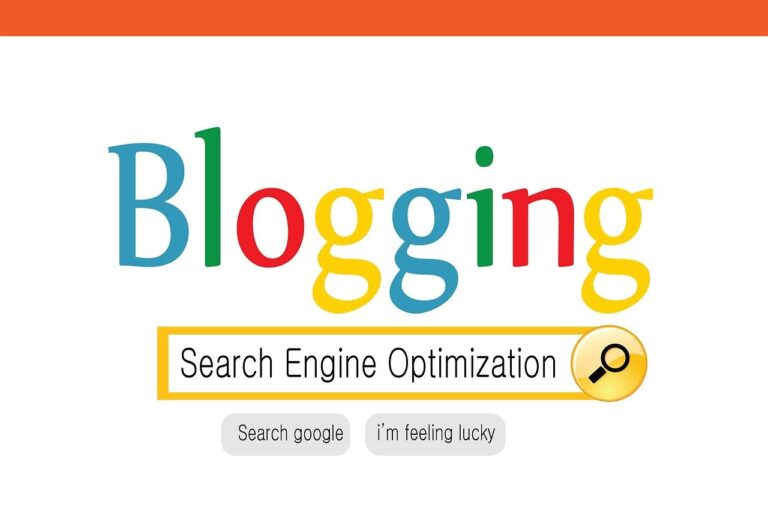Holistic practitioners face unique challenges when engaging in online discussions. The digital landscape can be complex, with diverse perspectives and potential conflicts arising from differing views on health and wellness.
Navigating these waters requires a blend of professionalism, effective communication, and a deep understanding of digital etiquette.

By establishing a strong online presence and mastering conflict resolution techniques, holistic practitioners can foster positive communities and protect their professional reputations. This approach not only helps in managing challenging conversations but also builds trust with clients and peers.
Effective online communication strategies are essential for conveying complex holistic health concepts clearly and respectfully.
Developing these skills takes time and practice, but the rewards are significant. A well-managed online presence can lead to increased engagement and client trust, expanding your reach and impact as a holistic health professional.
By focusing on clear, respectful communication and proactive reputation management, you can create a thriving online community centered around holistic wellness.
Key Takeaways
- Establish a professional online presence to build credibility and trust
- Use effective communication strategies to convey complex health concepts clearly
- Develop conflict resolution skills to maintain a positive online community
Understanding The Digital Landscape
The digital landscape presents unique opportunities and challenges for holistic practitioners engaging in online discussions. Navigating this terrain requires familiarity with common platforms, understanding the nature of online communication, and awareness of potential pitfalls.
Common Platforms For Online Discussions
Social media platforms like Facebook, Twitter, and LinkedIn offer spaces for holistic practitioners to connect with clients and peers. Professional forums and specialized healthcare networks provide more focused environments for industry discussions.
Online communities and groups centered around specific holistic practices or health topics can be valuable for targeted engagement. Video conferencing tools like Zoom and Skype enable face-to-face virtual interactions and webinars.
Blogs and websites allow practitioners to share in-depth content and foster discussions through comments sections. Email communication remains a crucial tool for one-on-one exchanges and newsletters.
The Nature Of Online Communication
Online communication differs significantly from in-person interactions. Text-based exchanges lack non-verbal cues, potentially leading to misunderstandings. Tone and intent can be easily misinterpreted without careful wording.
Asynchronous communication allows for thoughtful responses but may slow down conversations. The permanence of written content online requires extra caution in what you share.
Digital interactions can feel more impersonal, making it challenging to build trust and rapport with clients or colleagues. However, they also offer increased accessibility and convenience for both practitioners and patients.
Potential Pitfalls And Challenges
Holistic practitioners must be cautious about maintaining client confidentiality and privacy in online discussions. Be cautious about sharing identifiable information or discussing specific cases publicly.
Misinformation spreads quickly online. As a holistic practitioner, you must be prepared to address misconceptions and provide accurate, evidence-based information.
Navigating the digital landscape can be overwhelming due to the constant influx of information and rapid technological changes. Staying up-to-date with platform changes and best practices is essential.
Online discussions can sometimes turn hostile or unprofessional. Develop strategies for handling difficult interactions and maintaining a positive online presence.
Balancing time spent on online engagement with in-person practice and self-care is crucial to avoid burnout and maintain work-life balance.
Establishing A Professional Online Presence

Creating a strong professional image online is crucial for holistic practitioners. It helps build credibility, attract clients, and network effectively in the digital space.
Crafting A Professional Profile
Start by choosing the right platforms for your practice. LinkedIn and professional directories in your field are essential. Create a compelling bio that highlights your expertise, qualifications, and unique approach. Use a high-quality, professional headshot.
Showcase your skills and experiences through concise, well-written descriptions. Include any certifications, training, or notable achievements. Consider adding testimonials from satisfied clients to build trust.
Regularly update your profile with new skills, experiences, or accomplishments. This demonstrates your commitment to growth and keeps your profile fresh for potential clients or collaborators.
Setting Clear Boundaries
Establish guidelines for your online interactions. Decide what personal information you’re comfortable sharing and stick to it. Be mindful of client confidentiality when discussing cases or experiences.
Create separate professional and personal accounts on social media platforms. This helps maintain a clear distinction between your work and private life.
Set specific hours for responding to online inquiries or messages. Communicate these hours clearly on your profile or website. This helps manage client expectations and protects your personal time.
Consistency In Communication
Develop a professional tone for all your online communications. Be respectful, empathetic, and clear in your language. Avoid using jargon that might confuse potential clients.
Respond promptly to messages and comments. 70% of employers use social media to screen candidates, so timely and professional responses are crucial.
Maintain a consistent posting schedule on your professional accounts. Share valuable content related to your practice, such as wellness tips, industry news, or insights from your work. This helps establish you as a knowledgeable and engaged professional in your field.
Use a consistent visual style across all platforms. This includes your profile picture, color scheme, and any graphics you use. It helps create a cohesive and recognizable brand identity.
Effective Communication Strategies
Clear and thoughtful communication is crucial for successful online discussions. By mastering key techniques, holistic practitioners can foster understanding, provide meaningful feedback, and navigate potential conflicts with grace.
Active Listening And Reading
Active listening and reading are essential skills for online communication. When engaging in discussions, take time to fully absorb what others are saying before responding. Pay attention to the tone and context of messages.
Use these techniques to enhance your comprehension:
- Reread posts carefully to grasp nuances
- Take notes on key points
- Ask clarifying questions when needed
- Pause before replying to process information
By practicing active listening and reading, you’ll gain deeper insights and respond more effectively. This approach demonstrates respect for others’ perspectives and contributes to more productive conversations.
Constructive Feedback And Responses
Providing constructive feedback is vital for meaningful online discussions. When offering your thoughts, focus on being specific, actionable, and supportive. Use the “sandwich” method: start with positive observations, provide suggestions for improvement, and end on an encouraging note.
Consider these tips for constructive responses:
- Be specific about what worked well
- Offer clear, actionable suggestions
- Use “I” statements to express your perspective
- Acknowledge the effort behind the work
Remember to remain open to feedback yourself. Actively seek input from others and show appreciation for their insights. This reciprocal approach fosters a collaborative environment and promotes continuous learning.
Managing Misunderstandings
Misunderstandings can easily arise in online discussions due to the lack of non-verbal cues. To manage these situations effectively, stay calm and approach them with patience and empathy. When you notice a potential misunderstanding, address it promptly to prevent escalation.
Try these strategies to clarify and resolve misunderstandings:
- Acknowledge the confusion
- Restate your point clearly and concisely
- Ask for clarification on specific points
- Use examples to illustrate your meaning
If tensions rise, suggest taking the conversation offline or scheduling a video call. Face-to-face interactions can often help resolve complex misunderstandings more efficiently.
Conflict Management And Resolution
Effective conflict management in online discussions requires proactive strategies and thoughtful interventions. Practitioners can navigate challenges by addressing issues early, employing de-escalation techniques, and seeking external support when needed.
Identifying And Addressing Conflicts Early
Pay close attention to emerging tensions in online conversations. Look for signs like aggressive language, personal attacks, or off-topic arguments. When you notice these indicators, intervene promptly to prevent escalation.
Acknowledge the conflict openly but tactfully. You might say, “I’ve noticed some disagreement here. Let’s take a moment to clarify our perspectives.”
Encourage participants to express their concerns clearly and respectfully. Ask open-ended questions to help uncover the root causes of the conflict. For example, “Can you explain what specific aspect of the topic is troubling you?”
Document agreed-upon solutions after addressing conflicts. This creates accountability and helps prevent future misunderstandings.
Techniques For De-escalation
When tensions rise, use active listening to show you value each person’s input. Repeat back what you’ve heard to ensure understanding and validate emotions.
Reframe negative statements into neutral language. If someone says, “You’re completely wrong!”, you might respond with, “It seems you have a different perspective. Can you elaborate on your reasoning?”
Use “I” statements to express concerns without blame. For example, “I’m concerned that we’re moving away from our main topic. Can we refocus on the original question?”
Implement a brief “cooling off” period if emotions are running high. Suggest a short break or ask participants to take a few deep breaths before continuing the discussion.
Seeking Mediation Or Support
When conflicts persist or escalate beyond your ability to manage, don’t hesitate to seek external help. Consider involving a neutral third party, such as a professional mediator or HR representative, to facilitate discussions.
Prepare participants for mediation by explaining the process and setting clear expectations. Emphasize that the goal is to find a mutually beneficial solution, not to assign blame.
During mediation, ensure all parties have equal opportunity to speak and be heard. Encourage compromise and brainstorming of creative solutions that address everyone’s core concerns.
Follow up after mediation to check on progress and reinforce agreed-upon actions. This demonstrates your commitment to resolving conflicts and maintaining a positive online environment.
Protecting Your Reputation

As a holistic practitioner, your online reputation is crucial for attracting and retaining clients. Effective reputation management involves proactive monitoring, thoughtful responses to feedback, and cultivating a supportive professional network.
Monitoring Your Online Presence
Set up Google Alerts for your name and practice to stay informed about mentions across the web. Regularly search for your name and business on major search engines and social media platforms.
Review your online profiles and websites to ensure they accurately represent your current services and qualifications. Update outdated information promptly.
Consider using reputation management tools to track reviews and mentions across multiple platforms. These tools can provide valuable insights and save you time.
Periodically audit your digital footprint by reviewing old posts and removing any content that no longer aligns with your professional image.
Responding To Negative Feedback
Address negative comments or reviews promptly and professionally. Acknowledge the client’s concerns and offer to discuss the issue privately.
Avoid getting defensive or engaging in public arguments. Instead, focus on finding constructive solutions to resolve the issue.
When appropriate, publicly share how you’ve addressed the concern to demonstrate your commitment to client satisfaction.
Consider reaching out to satisfied clients and encouraging them to share their positive experiences online. This can help balance out any negative feedback.
Building A Supportive Network
Connect with other holistic practitioners and wellness professionals on social media and professional networking sites. Engage in meaningful discussions and share valuable content.
Participate in online forums and groups related to your field. Offer helpful advice and insights to establish yourself as a knowledgeable professional.
Collaborate with complementary practitioners on joint projects or content creation. This can expand your reach and enhance your credibility.
Seek out opportunities to contribute guest posts or articles to reputable websites in your industry. This can help build your reputation with authentic insights.
Consider joining professional associations related to your practice. Many offer online directories and networking opportunities that can boost your visibility.
Building A Positive Online Community

Creating a welcoming digital space requires active participation and thoughtful leadership.
Focus on authentic engagement, fostering constructive interactions, and sharing meaningful content to cultivate a thriving online community.
Engaging Authentically
Be genuine in your online interactions. Share personal experiences and insights related to holistic practices.
Respond promptly to comments and messages, showing you value community members’ input.
Ask thought-provoking questions to spark discussions. Encourage others to share their perspectives and expertise.
Use video chats or live streams to connect face-to-face with your audience. This builds trust and strengthens relationships within the community.
Create a welcoming and inclusive space where all members feel heard and respected. Acknowledge diverse viewpoints and experiences in holistic health.
Encouraging Positive Interactions
Establish clear community guidelines that promote respectful dialogue. Address conflicts swiftly and fairly to maintain a harmonious environment.
Recognize and celebrate members’ achievements and contributions. This fosters a supportive atmosphere and motivates continued participation.
Organize virtual events or challenges related to holistic practices. These activities unite members around shared goals and interests.
Provide resources and support for navigating difficult topics in holistic health. Offer guidance on constructive feedback to ensure discussions remain productive.
Contributing Valuable Content
Share evidence-based information on holistic practices. Cite reputable sources to maintain credibility and trust within your community.
Create diverse content formats such as blog posts, infographics, and short videos. This caters to different learning styles and preferences.
Invite guest experts to contribute insights on specialized holistic topics. This expands the community’s knowledge base and adds fresh perspectives.
Develop practical resources like guided meditations, healthy recipes, or exercise routines. These tools provide tangible value to your community members.
Regularly update your content to reflect current trends and research in holistic health. This keeps your community informed and engaged with relevant information.
Conclusion

Navigating online discussions as a holistic practitioner requires skill and patience. By implementing the strategies outlined in this article, you can create more productive and meaningful exchanges.
Remember to set clear guidelines for respectful communication. This helps foster an environment where all participants feel comfortable sharing their perspectives.
Stay focused on the topic at hand. Gently redirect conversations that veer off-course to maintain relevance and depth in your discussions.
Practice active listening and empathy. Acknowledge others’ viewpoints, even when they differ from your own. This approach builds trust and encourages open dialogue.
Be prepared to handle challenging situations calmly and professionally. Address conflicts promptly and fairly to maintain a positive atmosphere.
Continuously refine your online communication skills. Seek feedback from colleagues and participants to identify areas for improvement.
By mastering these techniques, you’ll enhance your ability to facilitate meaningful online discussions. This skill will prove invaluable in your holistic practice, allowing you to connect with clients and peers more effectively in the digital realm.
Frequently Asked Questions

Online discussions in holistic health education present unique challenges and opportunities. Practitioners must navigate sensitive topics, foster engagement, and create an environment of mutual respect and learning.
How can holistic practitioners manage contentious topics in online forums?
Address controversial subjects with sensitivity and objectivity.
Establish clear guidelines for respectful dialogue. Then, encourage evidence-based discussions and redirect conversations that become overly heated or personal.
Moderate actively, but allow for diverse viewpoints. Provide appropriate and effective responses to questions, maintaining a professional tone.
What are effective strategies for enhancing engagement in online discussions related to holistic practices?
Pose thought-provoking questions that relate theory to practice.
Incorporate real-world scenarios and case studies to stimulate critical thinking.
Encourage students to share personal experiences relevant to the topic. Also, implement field trip activities where learners observe and report on holistic concepts in their environment.
Why is respectful interaction among students crucial in online learning environments dedicated to holistic health topics?
Respectful dialogue fosters a safe space for sharing diverse perspectives on holistic practices. It allows for the exploration of sensitive health topics without judgment or ridicule.
Mutual respect enhances the learning experience by promoting open-mindedness and empathy among future practitioners. This cultivates a collaborative atmosphere essential for holistic approaches to health.
What methodologies can be used to synthesize and summarize views shared in online discussions among holistic health participants?
Employ concept mapping to visually represent the connections between different ideas shared.
Use thematic analysis to identify recurring themes and patterns in the discussion.
Create collaborative summaries where students take turns synthesizing key points. Then, implement peer review processes to ensure comprehensive and accurate summaries of shared knowledge.
How can holistic health students effectively contribute to and learn from online discussion boards?
Prepare for discussions by thoroughly reviewing course materials and conducting additional research.
Formulate thoughtful questions that deepen the conversation and challenge assumptions.
Take an active role in discussions by responding to peers and building on their ideas. Reflect on how the shared insights apply to your own practice and experiences in holistic health.
What are the benefits of using structured frameworks like the 3C Q method in facilitating online discussions for holistic practice courses?
The 3C Q method (Concepts, Connections, Questions) provides a clear structure for organizing thoughts and responses. It helps students focus on key concepts, make relevant connections, and formulate insightful questions.
This framework promotes deeper analysis and critical thinking about holistic health topics. It ensures that discussions remain focused and productive, enhancing the overall learning experience.






